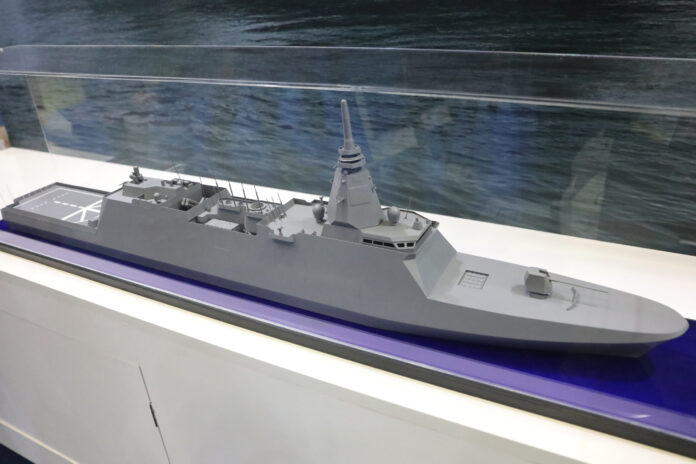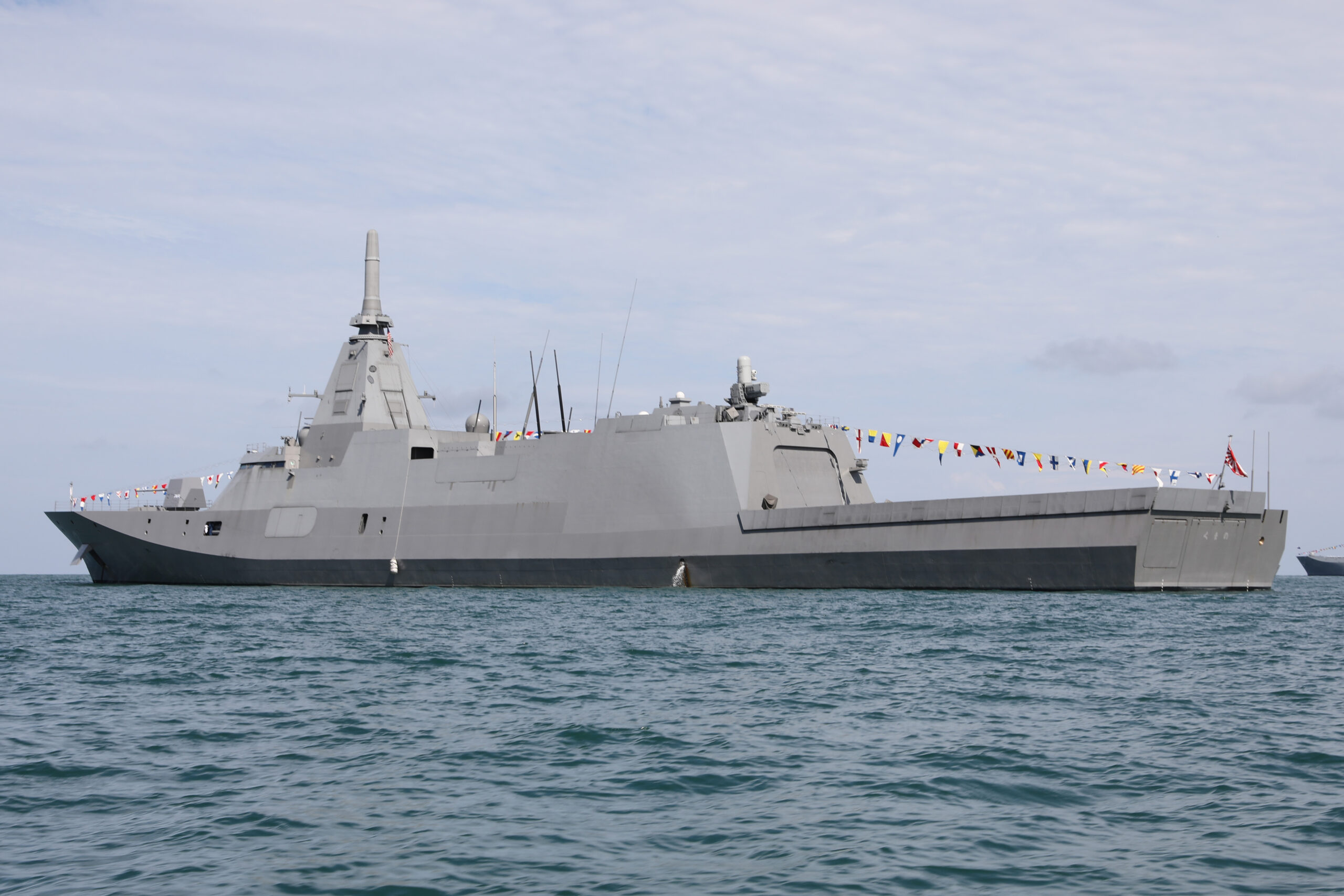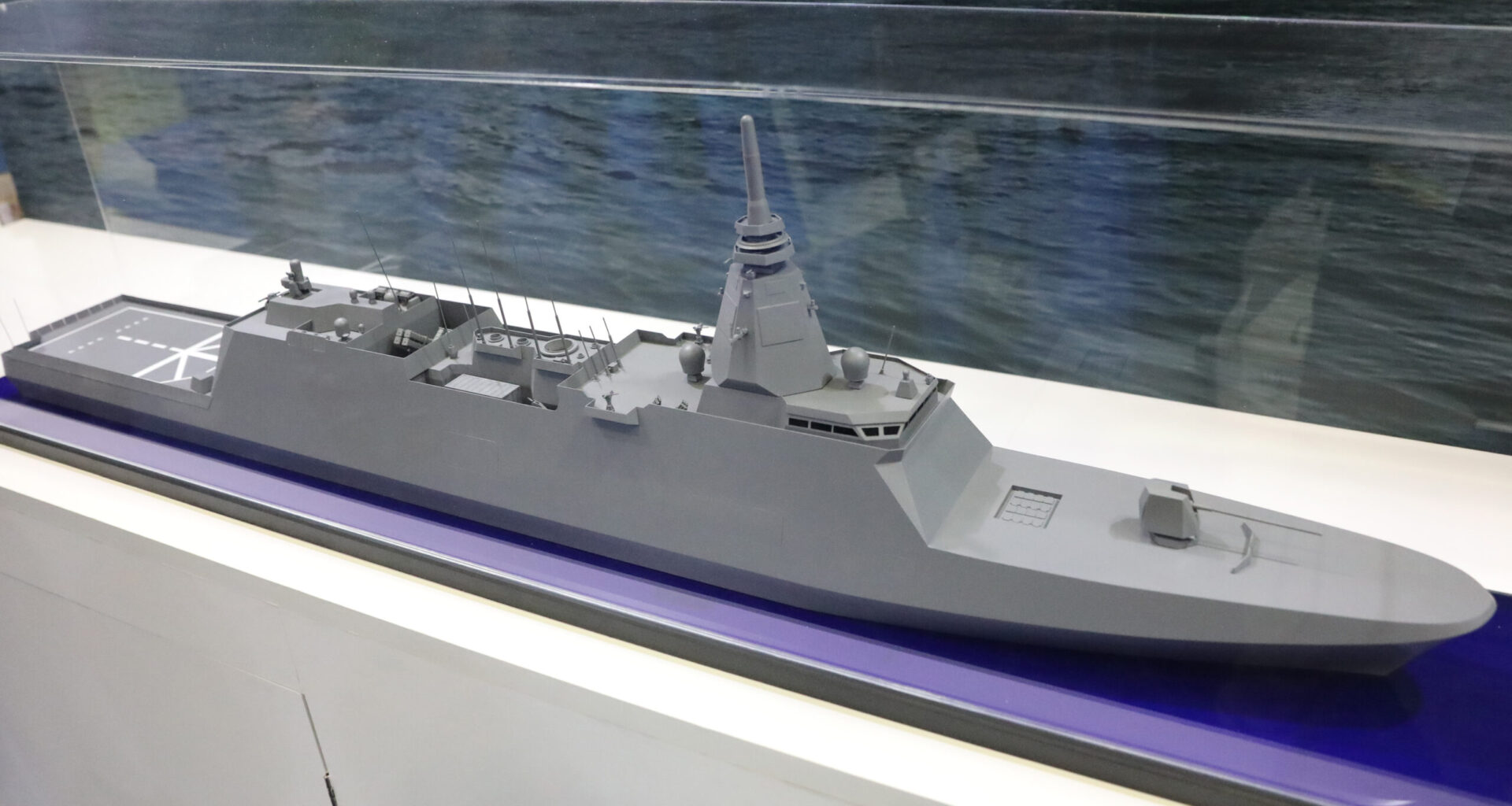 Australia has selected Japan’s Upgraded Mogami-class frigate, as represented here by a scale model. (Gordon Arthur)
Australia has selected Japan’s Upgraded Mogami-class frigate, as represented here by a scale model. (Gordon Arthur)
On 5 August, after much anticipation, Canberra announced that the Royal Australian Navy’s (RAN) next general-purpose frigate would be a Japanese design. The Upgraded Mogami-class platform emerged the victor after a fierce contest with the MEKO A-200 frigate from ThyssenKrupp Marine Systems in Germany.
Australia’s Department of Defence stated, “Following a rigorous and competitive tender process, Mitsubishi Heavy Industries’ Mogami-class frigate was assessed as best able to quickly meet the capability requirements and strategic needs of the Australian Defence Force.”
This selection allows Canberra and the customer to commence negotiations, “with the aim to enter early into binding, commercial contracts with Mitsubishi Heavy Industries (MHI) and the government of Japan in 2026”. It is unknown how much the purchase will cost, but the government has previously mentioned it could be up to A$10 billion (US$6.5 billion).
Defence Minister Richard Marles said, “The Upgraded Mogami-class frigate will help secure our maritime trade routes and our northern approaches as part of a larger and more lethal naval surface combatant fleet.”
Discussing the production timeline, Canberra said the first Japanese-built frigate would be delivered in 2029 and subsequently enter RAN service the following year. The plan is for the first three warships to be built in Japan, before construction transfers to Henderson in Western Australia.
Japanese shipbuilders have an enviable track record in delivering warships on time, so unless the RAN significantly tampers with the design, this planned timeline should be achievable.
On the other hand, Australian shipbuilders have a poor record for punctuality, so this represents the greatest risk in terms of meeting delivery schedules. Nor has MHI built naval vessels overseas before. There is already speculation that Japan might end up building more than the first three frigates.
Up to eleven new frigates are required, and they will replace the eight-ship Anzac class that has already begun the retirement process. As its surface combatant fleet withers in number, the RAN needs new vessels as soon as possible, especially since the first BAE Systems Hunter-class frigate will not arrive until 2034.
The Upgraded Mogami class features a 32-cell vertical launch system. The design was a step forward for Japan, for it emphasised stealth, automation, leaner manning and versatility. It also possesses a design life of 40 years, as opposed to 30 years for most warships.
The 32 missile cells for air defence and anti-ship missiles may have proved pivotal in Australia’s decision, as the MEKO A-200 offered only 16.
Another vital factor may have been the Japanese government throwing its weight behind the sale. Tokyo is keen to cement a deeper strategic relationship with Canberra, and this transaction marks a right step in that direction. The decision will also mollify Japan after it lost out in an Australian submarine competition nearly a decade ago.
 This is one of the original Mogami-class frigates of the JMSDF, but Australia will be procuring the larger version. (Gordon Arthur)
This is one of the original Mogami-class frigates of the JMSDF, but Australia will be procuring the larger version. (Gordon Arthur)
MHI and Mitsui E&S Shipbuilding are involved in building the Mogami class, with twelve frigates being constructed for the Japan Maritime Self-Defense Force (JMSDF) by FY2028. On 19 June the JMSDF commissioned its eighth Mogami-class frigate. According the Japanese defence documents, it cost approximately JPY47.4 billion (US$332 million).
After building the dozen Mogami frigates, JMSDF attention shifts to twelve of the larger and more capable upgraded ships, as selected by Australia, from FY2028. Also known as the 06FFM, the Upgraded Mogami benefits from lessons learned from the earlier platform. MHI received a contract for the first two on 9 May.
The full-load displacement of the Upgraded Mogami is listed as 6,200 tonnes, which is 700 tonnes more than its predecessor. At 142m in length, the modified frigate is 9m longer too, to accommodate the twelve additional missile cells.
Minister for Defence Industry Pat Conroy commented, “The Upgraded Mogami-class frigate is the best option for our navy, boosting its capability to put to sea.”
This is by far the most significant defence sale for Japan since World War II and, as Marles noted, “This does represent a very significant moment in the bilateral relationship between Australia and Japan.”
by Gordon Arthur

